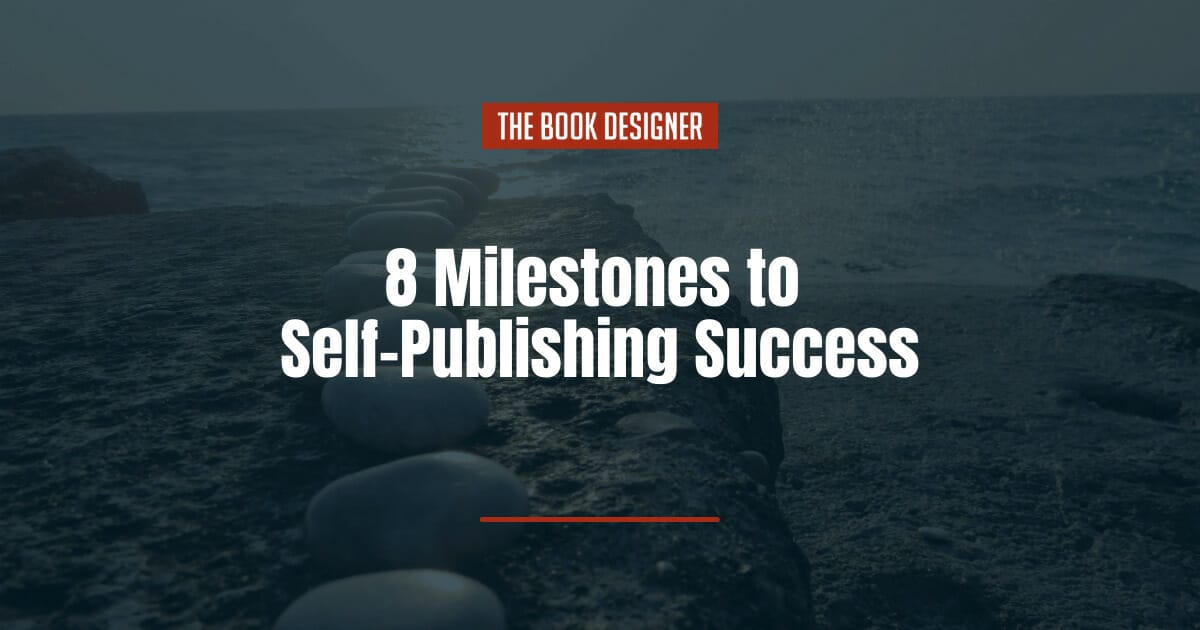Many new authors have a lot of questions about what it takes to be successful at self publishing. After all, there are so many stories about how self-published authors have made it big, and it seems like each of them took a slightly different approach.
So how do you make it big as an author without a powerhouse traditional publisher backing you? There are eight milestones along the way you’ll want to make sure you’re hitting, regardless of the approach you take.
When setting yourself up for self publishing success, consider these 8 milestones:
1. Discover Your Purpose: What Kind of Self Publisher are You?
This is the most important question for prospective self publishers to ask themselves, because everything that follows will come from the answer. I’ve addressed some of these concerns in my article Two Kinds of Self Publishers.
The basic idea is that some self-published authors write and publish as a hobby, while others do it competitively, as a business. Deciding which type of author you are is instrumental to figuring out what your purpose is and what success actually means to you.
For the hobby author, success might look like making your books available to family and friends, and enjoying the occasional stranger who purchases and leaves a review. Basically, your goal is to keep writing and publishing without ever worrying about how much money you earn.
For the business-focused author, your main goal is to sell books, either as an end in itself or in order to grow a related business. Writing and publishing books is a big part of your focus, but so is marketing those books (and yourself).
2. Establish Your Base: Setting Up Your Publishing Business
Many people about to jump into self publishing don’t realize they are simultaneously starting a business, or at least a business activity. Organizing yourself properly will save trouble down the road.
Setting up a publishing imprint is one part of the process, as is setting up appropriate business licenses, sales tax IDs (if you plan to sell directly), and even a legal structure for your business. It’s a good idea to talk to a lawyer about these things or, at the very least, read as much as you can about setting up your own publishing business.
3. Step Up to the Platform: Establishing Yourself with Your Market
The new reality for authors, both self-published and traditionally-published, is that they need to take responsibility for a good deal of the marketing for their book, and nowhere is that more important than in establishing their “author platform.”
Your author platform is made up of all of the marketing activities you do, online or off. It can include your social media, ads for your books, your author blog, speaking engagements or other public appearances, and even your book product pages.
4. Get Your Manuscript Ready: Finding Editorial and Proofreading Talent
The single biggest rap on self-published books is that the authors frequently skip or shortcut the editorial process. If you want your book to be taken seriously, you have to come to grips with the need for editing.
There are a few different ways to go about editing. You can start with self-editing your book manuscript. You can also work with beta readers for getting developmental feedback on what’s working and what’s not. You can also use tools like Grammarly or ProWritingAid to help proofread your book.
And finally, you can pay a professional editor or copyeditor to go through your manuscript before publishing it. Ask other authors for referrals when looking for an editor to make sure you find one that knows their stuff and provides good value for their price.
5. How Book Design Works: Should You Do It Yourself?
Book design does make a difference. With software packages, website formatting pages, templates everywhere, and a rush to get into print, it’s important to understand what goes into a book design in order to figure out what you will need for your book.
Formatting your manuscript is a time-consuming and sometimes painstakingly detailed process, but it’s within the skillset of most authors. Especially since there are formatting templates and software out there that can automate much of the process.
Designing your own book cover, however, gets a bit tricker, especially for print books. It’s worth it to work with a designer if at all possible. Otherwise, look for premade book covers or use a program like Canva for creating your book cover. Most POD services have downloadable templates for making sure that your book’s front and back covers and spine meet their criteria.
6. Get Into the Database: Make Certain Your Book is Listed Widely
Navigating the shoals of ISBN, LCCCN, PC-CIP, and all the other bibliographic databases and registrations can be confusing. At this stage you want your book to be listed as widely as possible so that bookstores, libraries, and other outlets can easily find it. (Although don’t expect them to find it on their own, you’ll need to do plenty of marketing and PR to get the word out.)
7. How to Use Print on Demand: Use Digital Printing to Meet Your Goals
The biggest change in publishing has resulted from the advent of digital printing technology which, in turn, gave rise to the “print on demand” (POD) distribution model. It’s allowed self-published authors to make their books available in print without having to pay huge amounts to get a few hundred or thousand books printed (and then figure out the logistics of storing and shipping all those books).
POD makes it possible for authors to have their books printed as they’re ordered, automatically through the various distribution systems. Authors can also order author copies inexpensively from most of the POD providers, so if they want to order a dozen or more books for an event, it’s easy and relatively affordable to do so.
8. Distribution: Getting Your Book to Buyers
All your work won’t amount to much if buyers can’t find your book. What’s the truth behind the rumors of bookstore prejudice against digitally-printed books. How will you distribute your book?
It’s easy to make your book available through most of the major online booksellers, but getting it out to bookstores and libraries often takes more legwork. Street teams can be an excellent way to raise awareness about your book at physical distribution points (ask them to request your book from their local bookstore or library). Reaching out to local booksellers or libraries can also be an excellent way to get your book into physical locations. In many localities, bookstores have special sections for local authors and love to highlight those books.
Note: this article was adapted from an article originally written by Joel Friedlander back in 2009.
Ready to start your self publishing journey? Download our free Advanced Publishing Kit to get started today.




